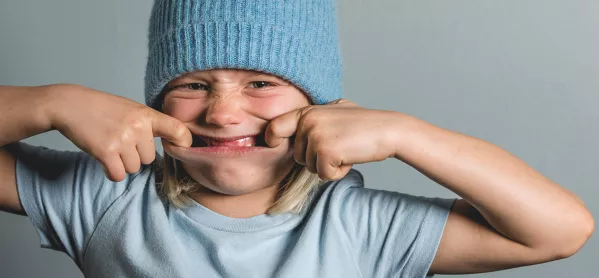- Home
- Podcast: ‘No school is immune from gender stereotypes’
Podcast: ‘No school is immune from gender stereotypes’

“What a beautiful little girl! Don’t you look lovely?”
“What a strong boy you are, so tough and brave!”
You can probably spot the issue with these statements.
And yet, these sorts of gender expectations are still depressingly commonplace in schools, says researcher Caren Gestetner, co-founder and CEO of Lifting Limits, a programme designed to bring gender equality in education.
Speaking on the latest episode of the Podagogy podcast, she says that, even at primary age, children are already well aware of the gender ideas that are being projected on to them.
Quick read: Schools ‘are full of harmful sexist language’
Quick listen: Talkin proper? The standard-English snobbery in schools
Want to know more? Motivational interviewing: bringing empathy to school
“Expectations on girls around their appearance come out very strongly when you talk to children about what’s hard about being a girl or woman,” she says.
Gender stereotypes in schools
“When they talk about what’s good about being a man, they say to not to be so concerned about their appearance and look after long hair. [They also mention] the expectations on boys not to show their emotions except through anger, and feeling judged if they cry.
“And related to that is an expectation that nurturing roles are not for boys.”
Problematic play
These ideas even trickle down to play time. At the beginning of the organisation’s pilot, which recently wrapped up after a year in five schools in London, it asked children to categorise different activities as being for girls, boys or everyone.
The particularly gendered activities, it found, were playing football and playing with a doll, which were overwhelmingly assigned to boys and girls respectively.
“But these attitudes can change,” Gestetner continues. “At the start of the pilot in the early years, we had 37 per cent of children saying that the doll was for everyone (with the vast majority saying it was for girls), and that went up to 59 per cent by the end.
“In key stage 1, there was an even bigger jump. At the start of the pilot, about 30 per cent of children said that the doll was for everyone. At the end of the pilot that had pretty much doubled. We’re starting to see that these things can be opened up.”
But how? She explains that the programme takes a whole-school approach (starting in primary in order to root out gender stereotypes before they become embedded), with training for staff, sessions with parents, and an overhaul of the curriculum (to shift the focus away from almost exclusively looking at white men in areas such as art, history and science) and changes to the learning environment.
Let’s talk about texts
One particularly important area to explore is the texts that children are presented with at school, Gestetner explains, because the roles that are shown in children’s books can be “very gendered”.
“Boys having adventures, mum at home making tea. It’s seen in terms of who’s taking risks, and who gets speaking parts... It’s unsurprising because the books in school are reflective of what’s happening in the wider society,” she says.
“Plus, [the books] are very often donated. But even in reading scheme books, you still see examples of a fireman putting up a ladder for dad to climb. You see lots of those things which are gendered, from the subtle to the more obvious.”
The teachers in the pilot, she continues, were eager for guidance on “the minefield of gendered language”, and parents, too, voiced their own frustrations at having to hunt for clothing and toys that don’t perpetuate gender stereotypes.
Not blaming schools
Meanwhile, Gestetner is keen to underscore that the programme is not “pointing the finger specifically at schools”.
“These stereotypes are everywhere,” she explains. “Even the best schools are not immune from the influences of wider society and these stereotypes are just ubiquitous. Even the best staff are not immune from the unconscious bias that we all have.
“But primary schools are a very powerful forum in which to challenge gender norms and make so that they don’t become perpetuated in the way that they too often are.”
The end goal, she continues, is not about girls overtaking boys, but freeing everyone from unhelpful gender expectations. And so what would a classroom free of gender stereotypes look like?
“It’s one where what children see and hear and experience represents a range of roles for boys and men and for girls and women, and one where children are not hearing language that sets up expectations of how people behave or how they look, where you don’t hear expressions like ‘man up’ or ‘like a girl’ as an insult.
“Where children are learning about a diverse range of people across all areas of the curriculum, and where women’s contributions are visible alongside those of men.”
You can listen to the podcast via the player above, or type “Tes - the education podcast” into your podcast platform (also via Spotify).
Keep reading for just £1 per month
You've reached your limit of free articles this month. Subscribe for £1 per month for three months and get:
- Unlimited access to all Tes magazine content
- Exclusive subscriber-only stories
- Award-winning email newsletters



